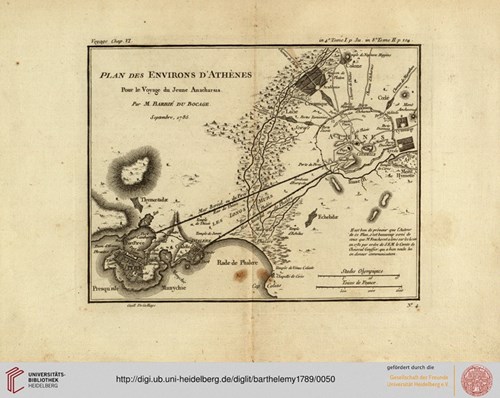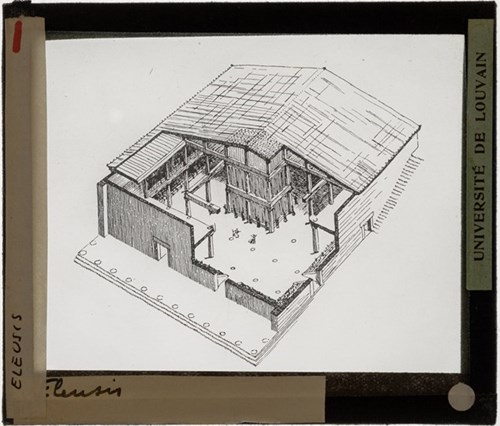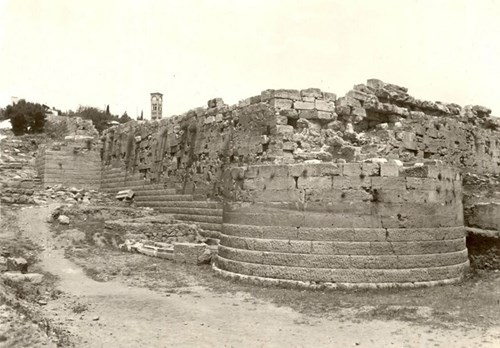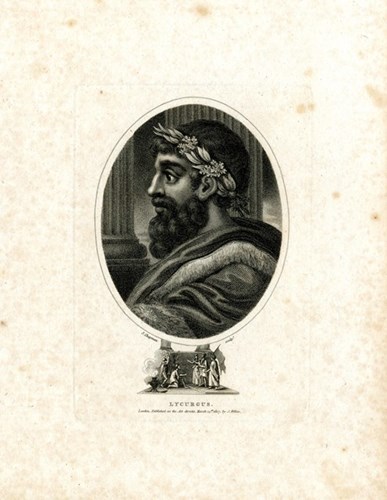The wall of Lycurgus
The crushing defeat of Athens at the end of the Peloponnesian War (404 BCE) ushered into a long period of political and social unrest. Eleusis found itself at the centre of a civil war between the supporters of the Thirty Tyrants and democrats. The former took refuge in Eleusis and declared the city’s independence, but the Democrats managed to prevail in the spring of 403 BCE and restored the sanctuary's close ties with Athens. The gradual restoration of Athens’ economic and political power allowed the Athenians to envision and implement new grandiose building projects. An immediate priority, of course, was the re-erection of the fortifications that protected Athens itself. The Long Walls that connected the city with Piraeus had been demolished after the war, but they were successfully rebuilt in the early fourth century.

Once the city was safe, the Athenians were able to turn their attention to the temple of Eleusis. Pericles’ building program had endowed the sanctuary with a new Telesterion and a defensive enclosure. Still, there was a widespread feeling that the temple could become even more impressive with the addition of a portico on the facade. The building of the porch of Philon satisfied the Athenians’ architectural ambitions, but it also created the need for a new expansion of the courtyard in front of the Telesterion. The defensive precinct of Pericles was too small, so it became necessary to replace it with a new wall at a greater distance from the temple of Demeter.

The new enclosure was erected in 370-360 BCE. The lower course consists of greyish-blue Eleusinian limestone. The stone’s outer surface has been treated with thick vertical chisel strokes. The upper courses consist of yellowish poros blocks built with the isodomic system (blocks of equal size, with the joints of one course over the middle of the blocks below). The wall is about 2.55 meters thick and includes two towers: a round one in the southeast corner and a square tower that protects the Southern Pylon, the main entrance to the sacred precinct for those arriving from the sea. This gate remained in use throughout the history of the sanctuary but underwent repeated repairs. The three surviving stone thresholds bear witness to these changes. The copper housing for the door pivot survives in the socket of the stone threshold.

The wall is conventionally attributed to Lycurgus, the Athenian logographer who served as manager of the public revenue and spared no effort in his desire to increase the security and splendour of Athens through monumental public works. However, the construction of the Eleusis enclosure is several decades older than the time of Lycurgus and does not seem to be part of his construction program.

Bibliography
Αλεξοπούλου-Μπαγιά, Πόλλυ. Ιστορία της Ελευσίνας: Από την Προϊστορική μέχρι τη Ρωμαϊκή περίοδο, Ελευσίνα: Δήμος Ελευσίνας, 2005.
Cosmopoulos, Michael. Bronze Age Eleusis and the Origins of the Eleusinian Mysteries, Cambridge: Cambridge University Press, 2015.
Kourouniotis, Konstantinos. Eleusis: a guide to the excavations and the museum, Athens: The Archaeological Society at Athens, 1936.
Mylonas, George. Eleusis and the Eleusinian Mysteries, London: Routledge, 1962.
Papangeli, Kalliopi.Eleusis: the archaeological site and the museum, Athens: Omilos Latsi, 2002.
Image Source: The Archaeological Society at Athens
Image source: Heidelberg University
Jean-Denis Barbié du Bocage: The Long Walls of Athens (1785)
Image source: Catholic University of Leuven
Unknown: The Telesterion of Eleusis (19th century)
Image source: The British Museum


